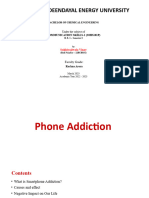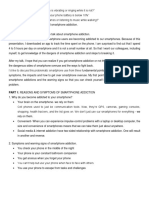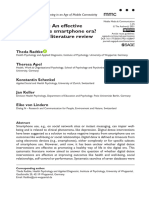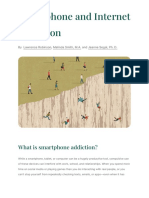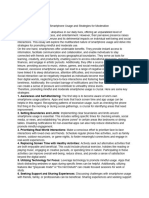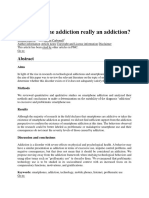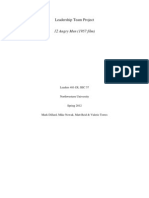0% found this document useful (0 votes)
66 views4 pagesSmartphone Addiction
The document explores smartphone addiction as a significant behavioral phenomenon characterized by compulsive use and loss of control, drawing parallels to recognized behavioral addictions. It outlines neurobiological and psychological mechanisms behind this addiction, societal implications, and evidence-based strategies for intervention and recovery. The conclusion emphasizes the need for intentional disconnection and sustained behavioral reform to reclaim digital well-being.
Uploaded by
downtastisch321Copyright
© © All Rights Reserved
We take content rights seriously. If you suspect this is your content, claim it here.
Available Formats
Download as TXT, PDF, TXT or read online on Scribd
0% found this document useful (0 votes)
66 views4 pagesSmartphone Addiction
The document explores smartphone addiction as a significant behavioral phenomenon characterized by compulsive use and loss of control, drawing parallels to recognized behavioral addictions. It outlines neurobiological and psychological mechanisms behind this addiction, societal implications, and evidence-based strategies for intervention and recovery. The conclusion emphasizes the need for intentional disconnection and sustained behavioral reform to reclaim digital well-being.
Uploaded by
downtastisch321Copyright
© © All Rights Reserved
We take content rights seriously. If you suspect this is your content, claim it here.
Available Formats
Download as TXT, PDF, TXT or read online on Scribd
/ 4




